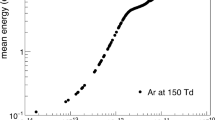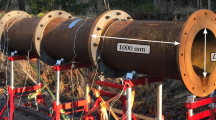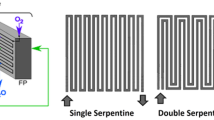Abstract
In nuclear reactor analysis, a relevant challenge is to achieve a suitable global description of nuclear systems through the coupling between neutronics and thermal hydraulics. Indeed, a multi-physics approach improves the reactor safety analysis and the design of different types of nuclear systems; in addition, it allows the investigation of physical effects at different scales of time and space. In this context, a challenging task is the development of multi-physics tools to study the fuel cycle. This paper presents a modelling approach for 3D burnup analysis with the Serpent Monte Carlo code that implements an external interface for the coupling with OpenFOAM, importing material temperatures and density field. We adopt CFD to simulate thermal hydraulics for its high flexibility that simplifies the management of input data. In addition, the coupling with a Monte Carlo code assures a natural description of the different physics phenomena of nuclear reactors. We carry out the burnup calculations for one year of burnup of a PWR fuel cell, composed of an \(\hbox {UO}_{2}\) pin surrounded by water. We compare the results to those obtained from simulations that adopt uniform temperature and density distributions. The results show that thermal hydraulics feedback influences the spatial distribution of the reaction rates over the time, leading to a remarkable effect on the nuclide density field along the radial and axial direction. In future works, we plan to extend the analysis for fuel assembly design.













Similar content being viewed by others
Change history
26 June 2020
During production, mistakes have been introduced.
References
A.G. Mylonakis, M. Varvayanni, N. Catsaros, P. Savva, D.G.E. Grigoriadis, Ann. Nucl. Energy 72, 104 (2014)
A. Cammi, V. Di Marcello, L. Luzzi, V. Memoli, A Multi-Physics Modelling Approach Oriented to Safety Analysis of Innovative Nuclear Reactors (Nova Science Publishers, Hauppauge, 2011)
A. Cammi et al., Ann. Nucl. Energy 38, 1356 (2011)
E. Cervi, S. Lorenzi, A. Cammi, L. Luzzi, Nucl. Eng. Des. 346, 209 (2019)
E. Cervi, S. Lorenzi, L. Luzzi, A. Cammi, Ann. Nucl. Energy 132, 227 (2019)
J. Leppänen, M. Pusa, T. Viitanen, V. Valtavirta, T. Kaltiaisenaho, Ann. Nucl. Energy 82, 142 (2015)
J.F. Briesmeister, MCNP—A General Monte Carlo N-Particle Code, Version 4C (LA-13709-M., Los Alamos National Laboratory, 2000)
E. Shwageraus, E. Fridman, E. Abramski, A. Galperin, in The 23th Conference of the Nuclear Societies in Israel Book of articles (Israel, 2006), p. 256
D.P. Griesheimer, Ann. Nucl. Energy 82, 29 (2015)
K. Wang et al., Ann. Nucl. Energy 82, 121 (2015)
V. Valtavirta, T. Viitanen, J. Leppänen, Nucl. Sci. Eng. 177, 193 (2014)
D. Kotlyar, Y. Shaposhnik, E. Fridman, E. Shwageraus, Nucl. Eng. Des. 241, 3777 (2011)
D.P. Griesheimer et al., Ann. Nucl. Energy 82, 29 (2015)
J. Leppanen, T. Viitanen, V. Valtavirta, Trans. Am. Nucl. Soc. 1074, 1165–1168 (2012)
Lin-Sen Li, Hao-Min Yuan, Kan Wang, Nucl. Eng. Des. 250, 385 (2012)
A. Ivanov, V. Sanchez, U. Imke, Development of a Coupling Scheme Between MCNP5 and SUBCHANFLOW for the Pin- and Fuel Assembly-Wise Simulation of LWR and Innovative ReactorsM&C 2011 (Rio de Janeiro, Brazil, May 8–12, 2011)
D. Kotlyar, E. Shwageraus, Ann. Nucl. Energy 63, 371 (2014)
J. Dufek, J.E. Hoogenboom, Nucl. Sci. Eng. 162, 307 (2009)
L. Jutier et al., Nucl. Sci. Eng. 181, 105 (2015)
A. Cammi et al., Nucl. Eng. Des. 300, 308 (2016)
D. Chiesa, M. Clemenza, S. Pozzi, E. Previtali, M. Sisti et al., Ann. Nucl. Energy 96, 270 (2016)
H.G. Weller, G. Tabor, H. Jasak, C. Fureby, Comput. Phys. 12, 620 (1998)
C. Castagna et al., in Proceedings of 26th International Conference Nuclear Energy for New Europe (Bled, Slovenia, September 11–14, 2017), pp. 603.1–603.8
C. Castagna et al., in Proceedings of Physor 2018 (Cancún, México, April 22–26, 2018) pp. 2115–2125
C. Castagna, S. Lorenzi, A. Cammi, in Proceedings of 27th International Conference Nuclear Energy for New Europe (Portoroz, Slovenia, September 10–13, 2018), pp. 205.1–205.8
G. Grasso, C. Petrovich, D. Mattioli, C. Artioli, P. Sciora, D. Gugiu, G. Bandini, E. Bubelis, K. Mikityuk, Nucl. Eng. Des. 278, 287 (2014)
A. Bousbia-Salah, F. D’Auria, Prog. Nucl. Energy 49, 1 (2007)
C. Castagna, D. Chiesa, A. Cammi, S. Boarin, E. Previtali, M. Sisti, M. Nastasi, A. Salvini, G. Magrotti, M. Prata, Ann. Nucl. Energy 113, 171 (2018)
R. Eymard, T. Gallouet, R. Herbin, The Finite Volume Method. Handbook for Numerical Analysis (North Holland, Amsterdam, 2000), pp. 715–1022
O.C. Zienkiewicz, R.L. Taylor, P. Nithiarasu, The Finite Element Method for Fluid Dynamics (Elsevier, Butterworth-Heinemann, Amsterdam, 2013)
The Westinghouse Pressurized Water Reactor nuclear power plant (Westinghouse Electric Corporation Water Reactor Divisions, 1984)
T.L. Perelman, Int. J. Heat Mass Transf. 3, 293 (1961)
Internal Assessment for the Properties of Water and Steam. Revised Release on the IAPWS Industrial Formulation 1997 for the Thermodynamic Properties of Water and Steam. Technical Report (International Association for the Properties of Water and Steam, 2007)
J.R. Lamarsh, Introduction to Nuclear Engineering (Addison-Wesley, Boston, 1975)
W.G. Luscher, K.J. Geelhood, Material Property Correlations: Comparisons Between FRAPCON-3.4, FRAPTRAN 1.4, and MATPRO. Technical Report. NUREG-CR-7024 (Pacific Northwest National Laboratory, 2011)
S.B. Pope, Turbulent Flows (Cambridge University Press, Cambridge, 2000)
D.B. Spalding, J. Appl. Mech. 28, 455 (1961)
W. B. Weihermilfer, C. S. Allison, LWR Nuclear Fuel Bundle Data for Use in Fuel Bundle Handling. Topical Report EY-76-C-M-1830 (Pacific Northwest Laboratory, 1979)
A.E. Isotalo, P.A. Aarnio, Ann. Nucl. Energy 37, 1987 (2011)
OECD/NEA Data Bank, The JEFF-3.1.1 Nuclear Data Library. Technical Report 22, 2009
J.R. Lamarsh, Introduction to Nuclear Reactor Theory (Addison-Wesley Publishing Company, Boston, 1966)
J. Dufek, D. Kotlyar, E. Shwageraus, Ann. Nucl. Energy 60, 295 (2013)
J. Dufek, D. Kotlyar, E. Shwageraus, Ann. Nucl. Energy 62, 260 (2013)
H. Robbins, S. Monro, Ann. Math. Stat. 22, 400 (1951)
D. Kotlyar, E. Shwageraus, Ann. Nucl. Energy 96, 61 (2016)
F. Gleicher et al., in Proceedings of Top Fuel 2016 (Boise, ID, USA, September 11–15, 2016), pp. 261–270
H.S. Jeong et al., Ann. Nucl. Energy 90, 240 (2016)
T. Viitanen, J. Leppänen, Nucl. Sci. Eng. 171, 165 (2012)
G. Rozza, D.B.P. Huynh, A.T. Patera, Arch. Comput. Methods Eng. 15, 229 (2008)
C. Castagna, M. Aufiero, S. Lorenzi, G. Lomonaco, A. Cammi, Energies 13(4), 1 (2020)
C. Fiorina, I. Clifford, M. Aufiero, K. Mikityuk, Nucl. Eng. Des. 294, 24 (2015)
Acknowledgements
This work has been supported by CINECA Supercomputing Center, using the GALILEO cluster in Bologna (Italy), and by an Amazon Web Services (AWS) in Education grant award.
Author information
Authors and Affiliations
Corresponding author
Additional information
Focus Point on Advances in the physics and thermohydraulics of nuclear reactors edited by J. Ongena, P. Ravetto, M. Ripani, P. Saracco.
The original version of this article was revised: In table 2 “gd Radial direction” reads correctly “Radial direction”. In table 3, in row “Pu-239”, the entries in columns 14 and 15 were wrong and have been corrected.
Rights and permissions
About this article
Cite this article
Castagna, C., Cervi, E., Lorenzi, S. et al. A Serpent/OpenFOAM coupling for 3D burnup analysis. Eur. Phys. J. Plus 135, 433 (2020). https://doi.org/10.1140/epjp/s13360-020-00427-3
Received:
Accepted:
Published:
DOI: https://doi.org/10.1140/epjp/s13360-020-00427-3




